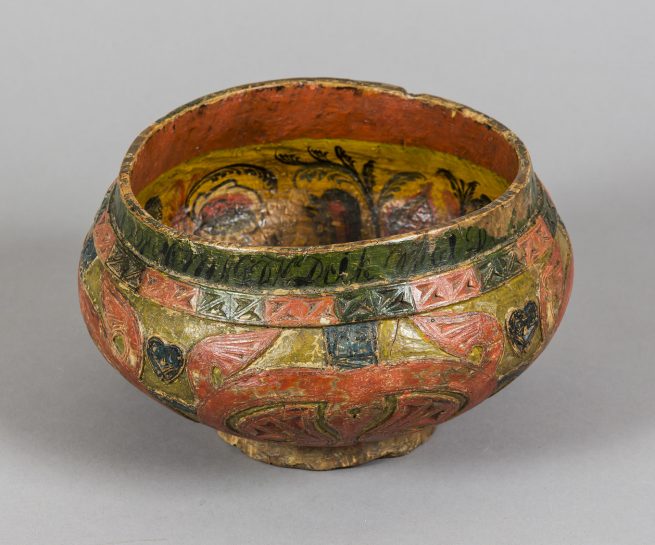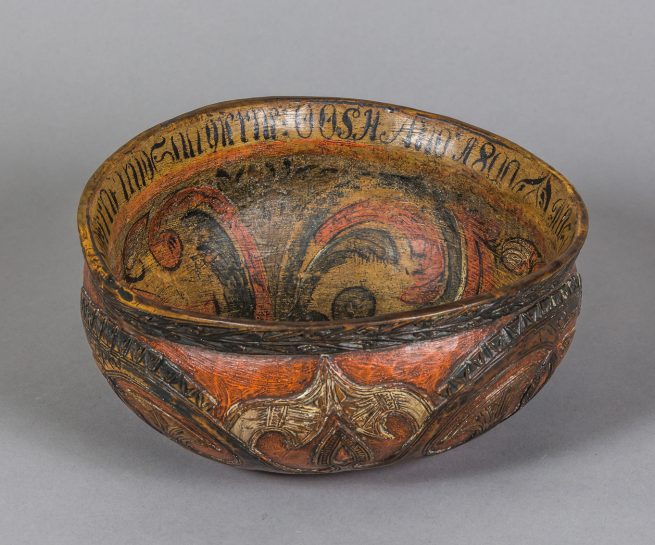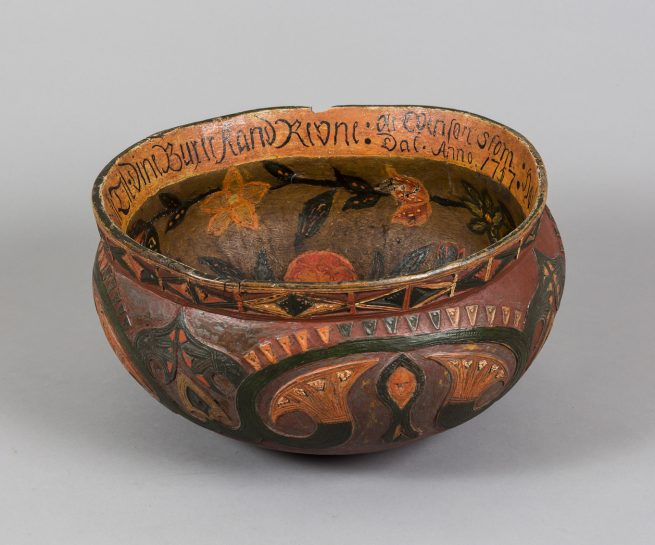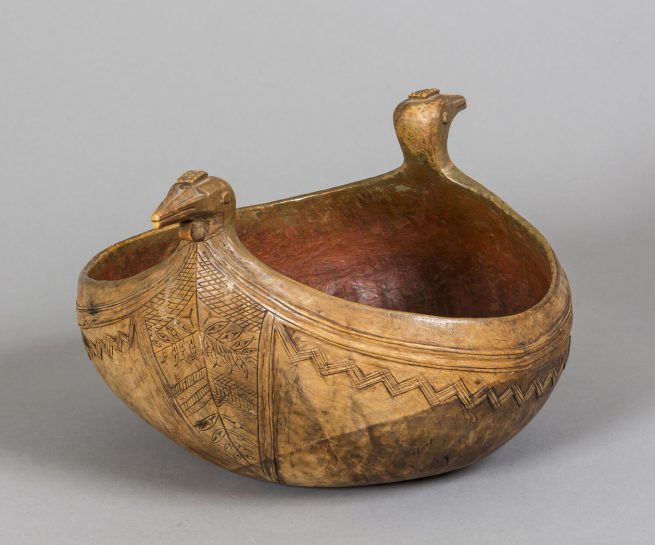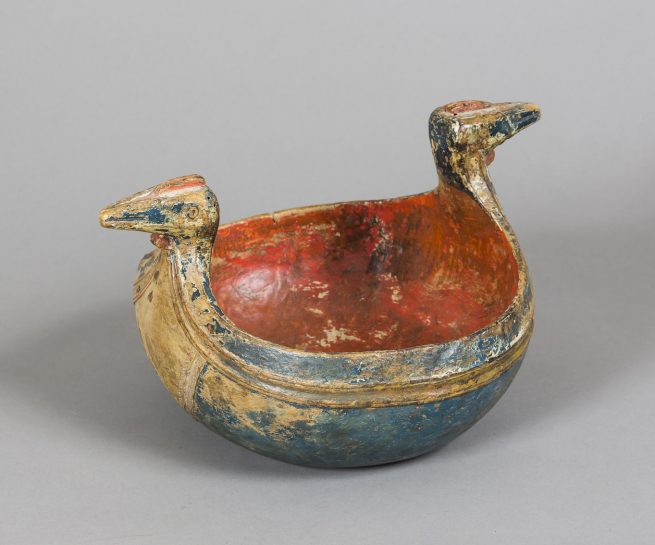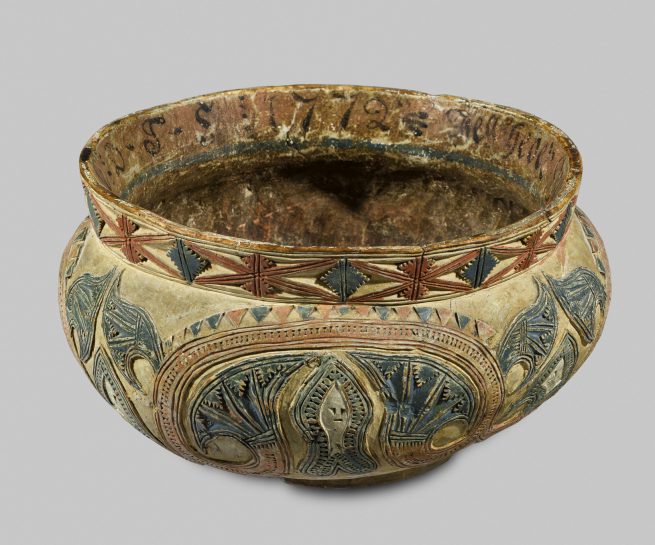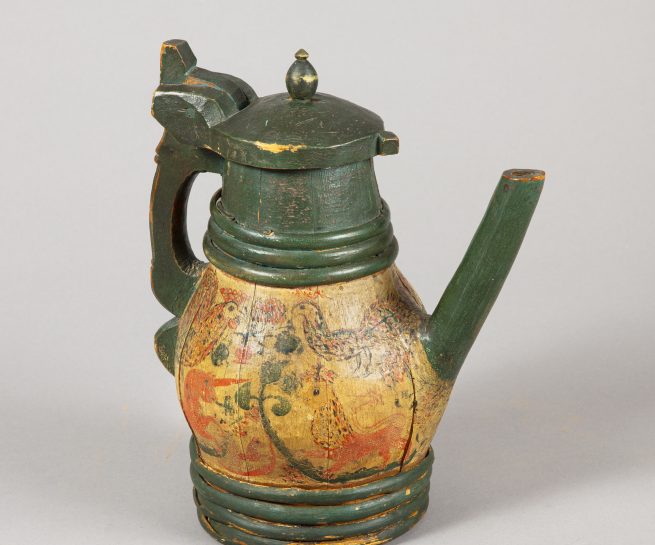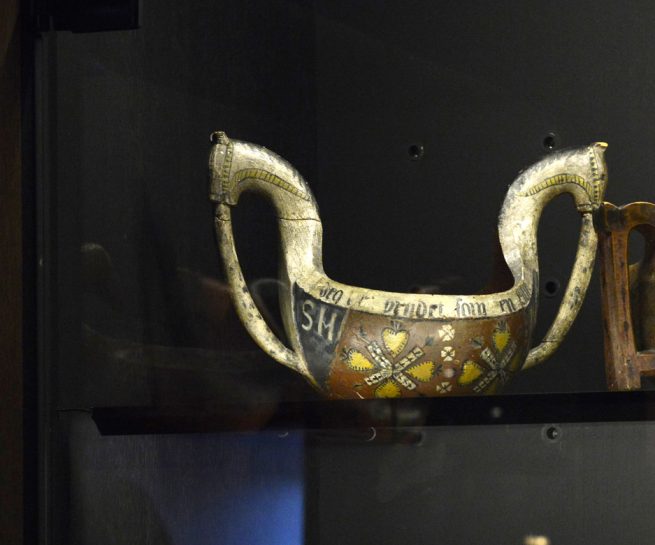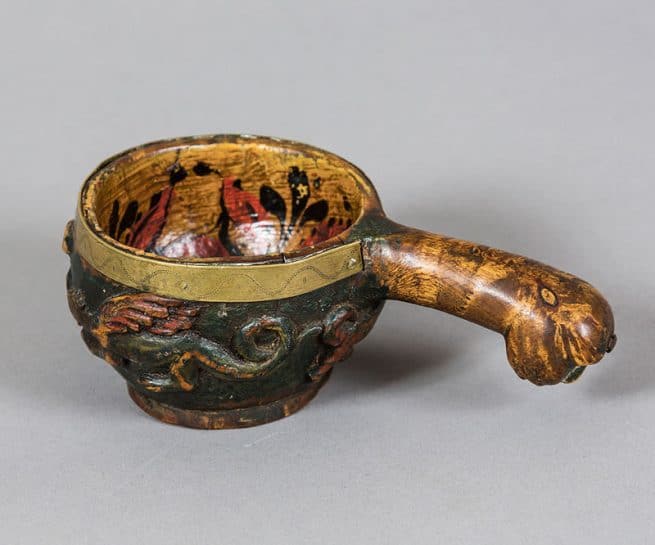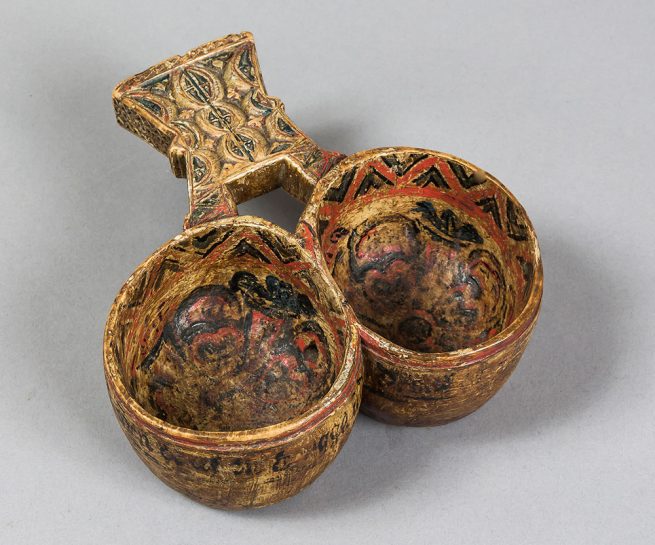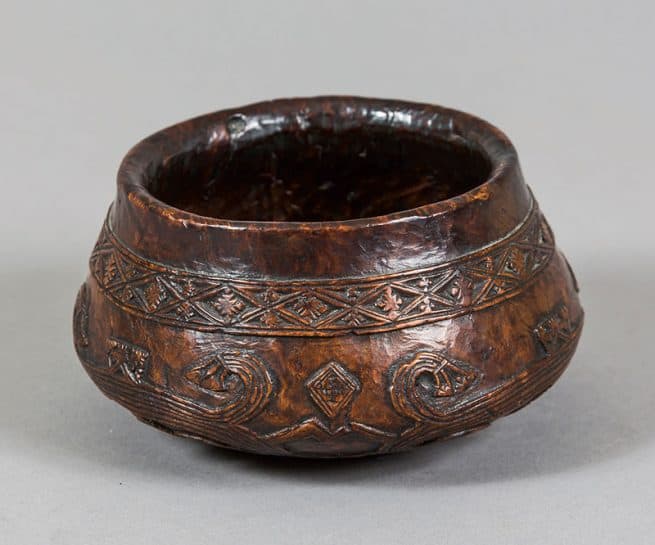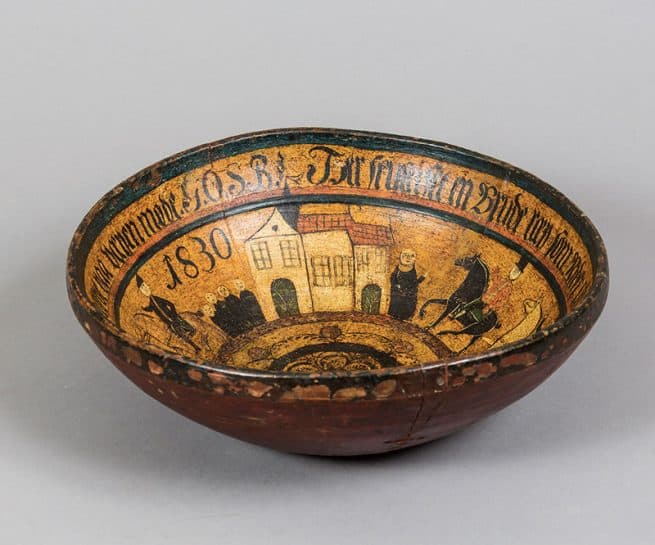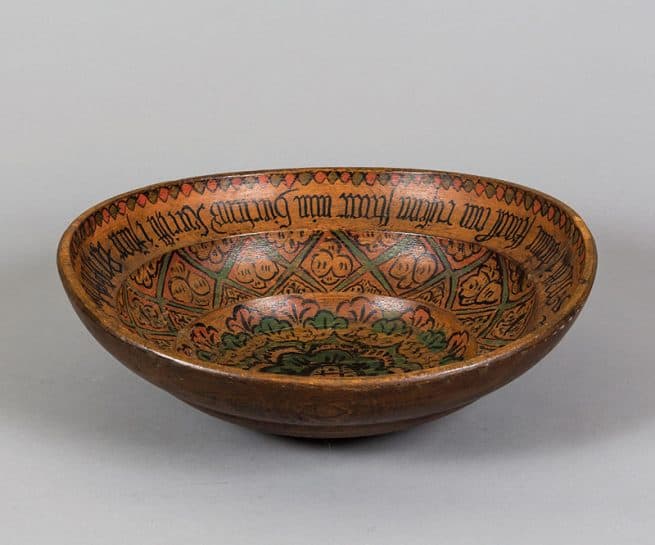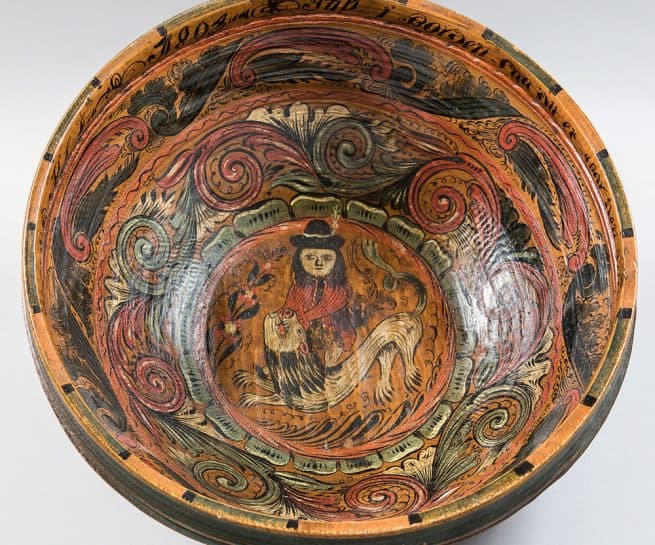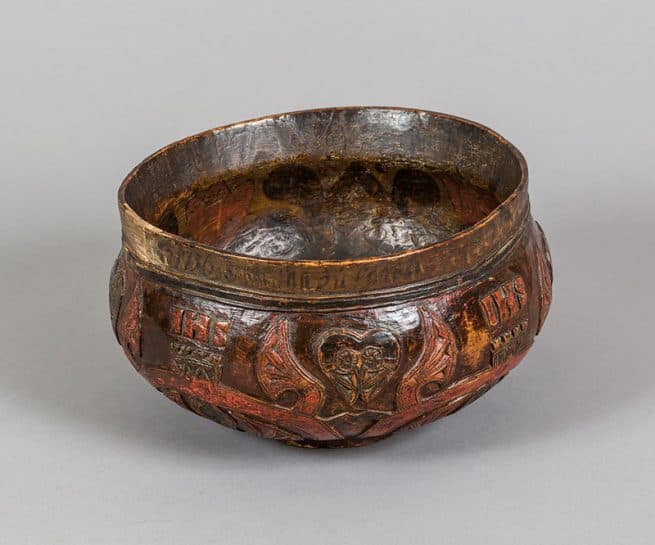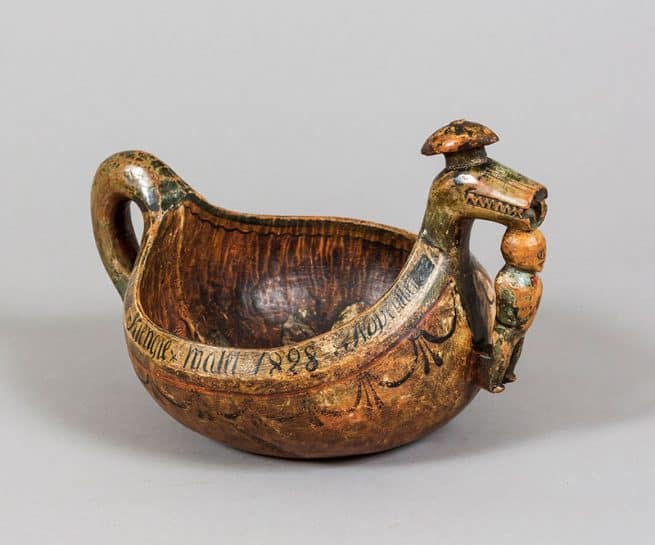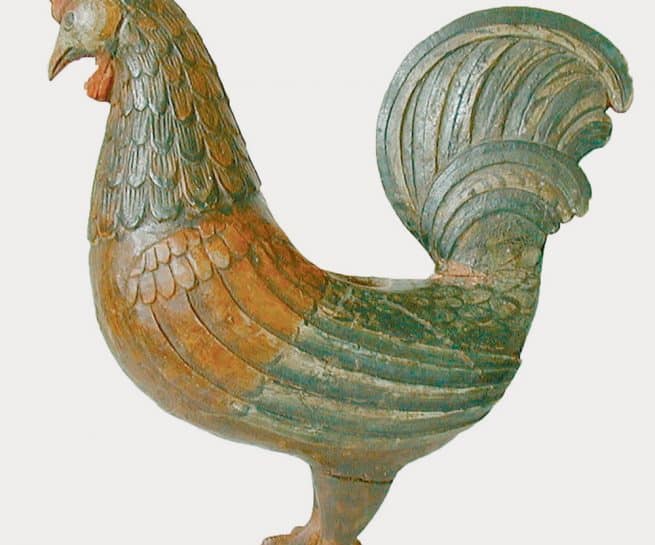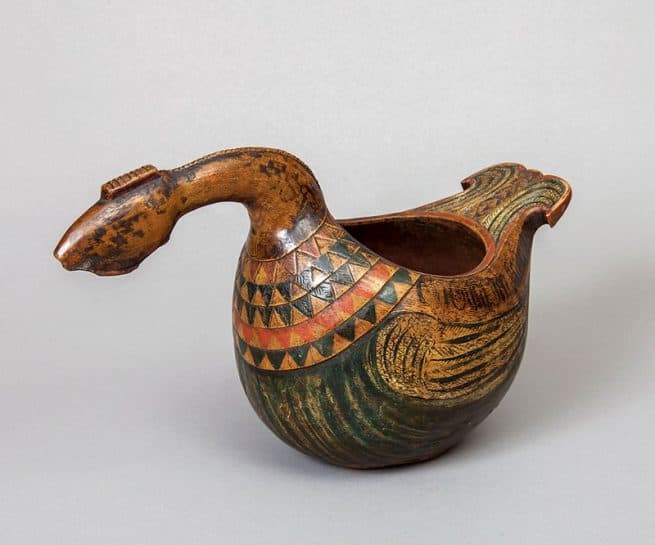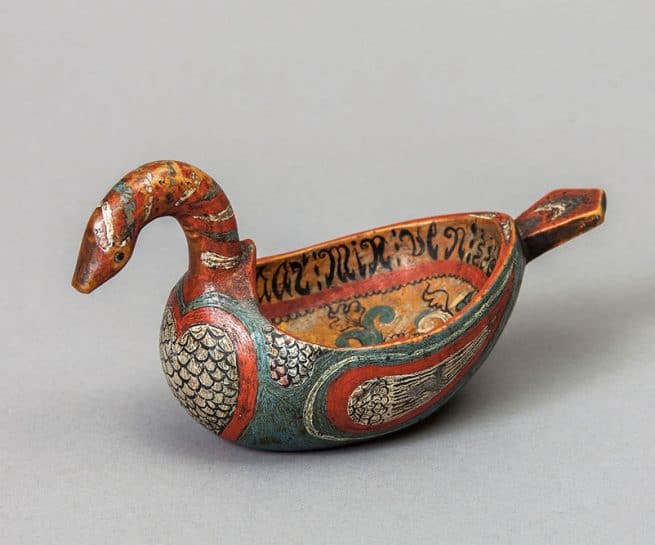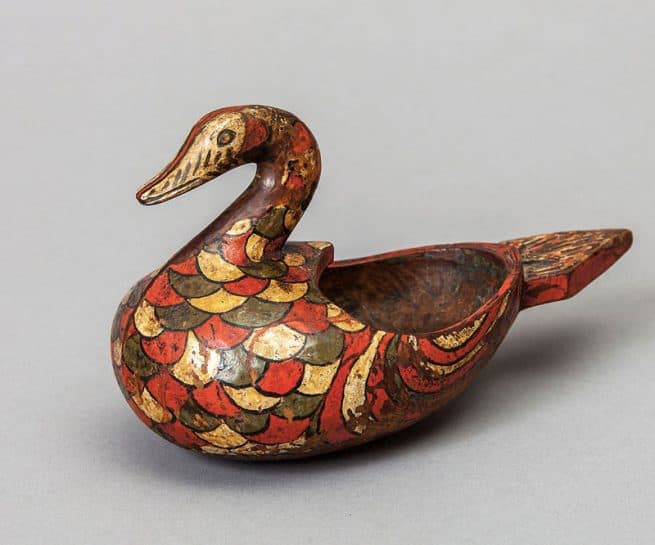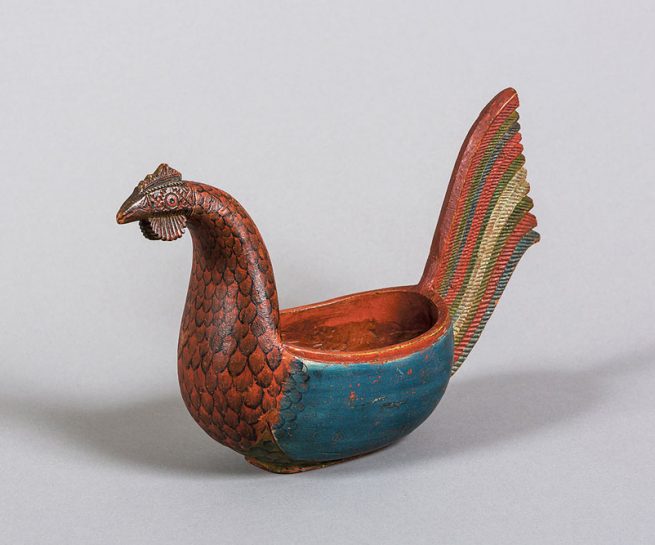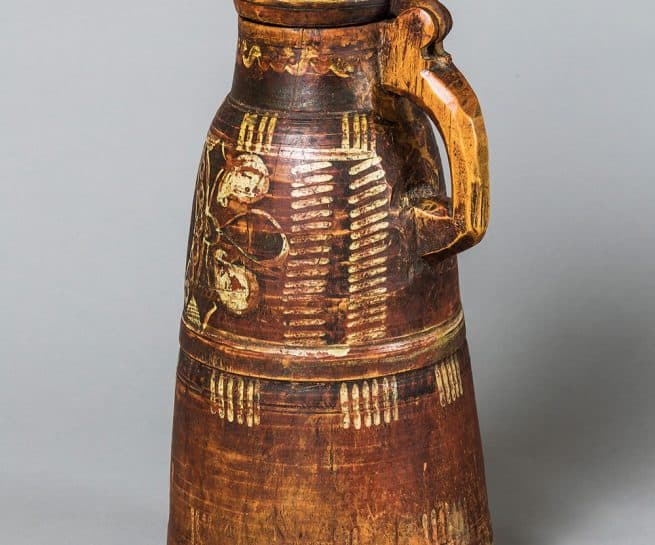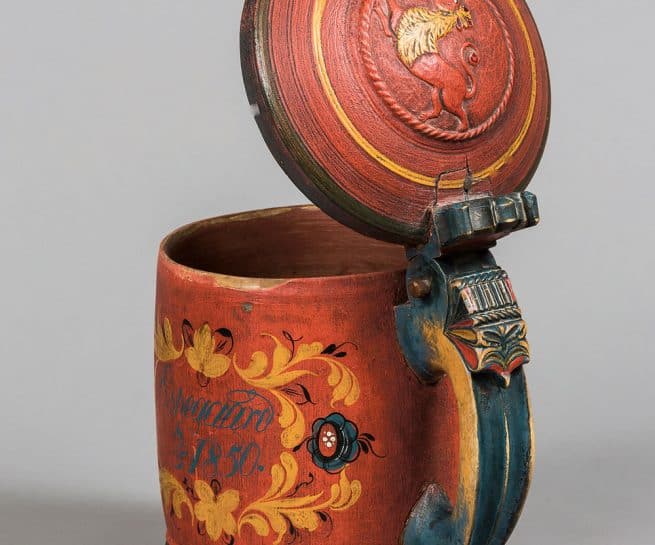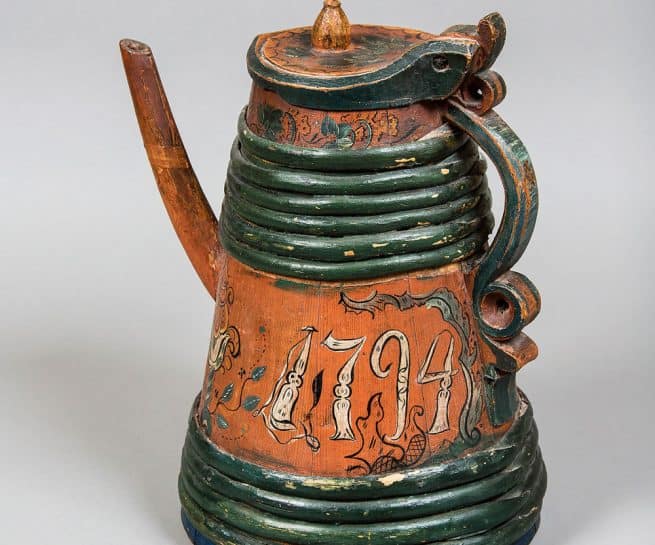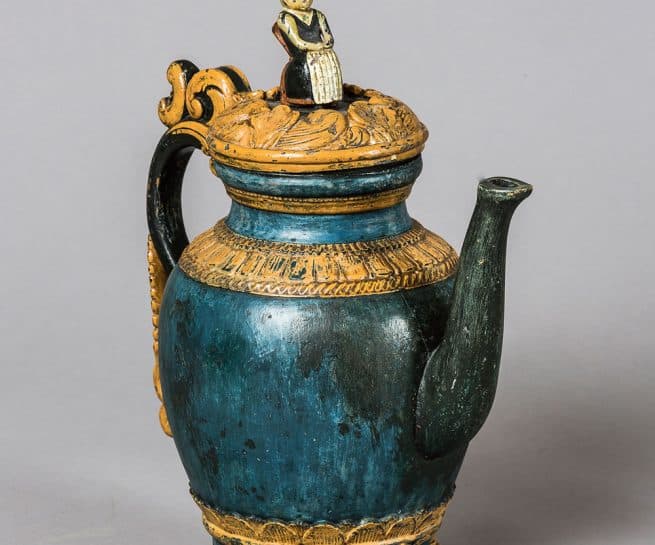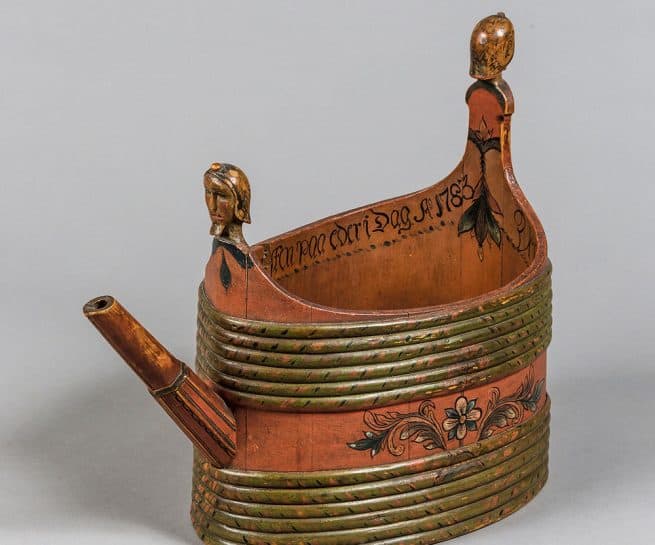Drinking vessels
Drinking vessels, known from prehistoric times. The design, material and use has been associated with changing eating and table customs in different social strata and with different uses for everyday and special occasions.
HISTORY
In the Orient and in the Mediterranean, ceramics have been known for a long time. From these areas there is a rich material that shows simple drinking vessels for daily use and finer ceramic material with glaze and décor. In the European Middle Ages, many materials and forms were taken from ancient times drinking vessel. Cups, bowls and bowls were made in ceramics, glass, metal, wood and horns.
In Norway, medieval culture excavations show that we have had drinking vessels of wood and ceramic material. The city craftsmen made from the 18th century drinking vessels after European fashion of silver, ceramics and glass, while the builders preferably used the tree as material painted with flowers and ranks. They also mimicked the drinking vessels from the cities and could dare to transfer shapes from silver and pottery to wood.
The big, painted beer bowls, well known from the folk art of Norway, were also taken from the city culture. The oldest, from approx. 1600, bear distinctive touch of professional manufacture. The beer bowls were sent around to the guests, and everyone drank the same bowl. Smaller beer hens or chalices were for one person and one retrieved drinks from a larger vessel. The drinking vessels could have handles on two sides, like the «kjenger», or be shaped like a drinking can with a handle on the side. Most preserved wooden drinking vessels have been used for festive purposes and were rarely used, as people generally used simpler, unpainted drinking vessels in their everyday use.
A variety of drinking vessels were made for the different stages of the drinking ceremonies, such as jugs, bowls, «kaner», «kjenger», cups and beer hen.
PITCHERS, DRINKING JUGS, «TUTE» JUGS
A drinking vessel for beer or other beverage. These drinking vessels can have a handle on the side and hinged lid. Some of the largest pitchers have probably been used for pouring beer into jugs. The beer was stored in barrels that usually stood in the basement. From the barrels, one could tap beer over to «tute» jugs and then pour it over into the ale-bowl or other vessels which guests could drink from.
BEER BIRDS – BEER HEN – BEER DUCK
A drinking vessel or wooden ladle shaped as a bird. They have a handle or shaft shaped like a bird’s head, and they tend to have a tail on the opposite side. Most preserved beer birds are from the 1700s and 1800s, and have been used in rural areas. They also occur as «twin birds» in which two parallel birds hang together.
The term links them to beer drinking. Beer birds could be used as independent drinking vessels, and smaller beer birds could also be used as beers ladles to drink from when the beer was served in large ale-bowls. According to tradition, they were floating around in the bowls when they were not in use. Geese, ducks and pelicans are the most common bird species used as a models for beer birds.
«KANER»
Is a boat-shaped drinking vessel with two handles. The handles are usually symmetrical and can be shaped like dragon heads. There are also «kaner» where one handle is shaped like a head and the other as a tail. It can be difficult to distinguish «kaner» from «kjenger» and beer birds, but these usually have rounder or more oval bodies.
In Norway it seems that the use of «kaner» in the 1700s and 1800s has been delimited to Eastern Norway, especially Telemark, but they have probably had a wider spread earlier.
«KJENGER»
Is a drinking vessel made for beer. «Kjenger» has been used primarily in Hordaland and Sogn, and in Voss it was by far the only used drinking vessel for beer. Most preserved «kjenger» are from the 1700s and 1800s. The «kjenge» is shaped like a round or oval bowl with two raised handles. The handles are usually shaped like stylized horse heads, but there are also a number of other forms. The handles are usually symmetrical, but not always. A group has dragon heads for handles on one side and a tail on the other. «Kjenger» are carved from a single piece of wood.
ALE-BOWLS
A bowl-shaped drinking vessel for beer. Most ale-bowls are twisted or carved from a single piece of wood. The beer bowls often have painted or carved decor, and they often have inscriptions with names, owner’s initials and dates around the edge.
In the Viking and Middle Ages, large bowls and bowls of wood were common, and through saga literature and medieval imagery we see that they drank from them. In the period after the reformation, wooden bowls were probably the most common drinking vessels in both urban and rural areas in Norway.
DECORATION
The oldest painted bowls from the 1500s and early 1600s are distinguished with foliage in medieval and renaissance style. Beyond the countryside, rose painting flourished in the 1700s. Painted beer bowls become very popular and a variety of variations and local characteristics develop in the decor. The use of beer bowls continued throughout the 19th century, and in some regions, beer bowls could be used for weddings up to the mid 20th century.
The small bowls were drank from and they could be sent around the room, so that more people drank from the same bowl. Beer bowls that held about five liters or more stood on the table, and then you poured beer with smaller bowls, ladles or other vessels when you were to drink. But it could also be a way to show strength lifting and drinking directly from large bowls with one hand. On a bowl from Orkdal it’s written: «Th one that can lift me full of beer with one hand and drink, he must be a true and steady man.»
Spre gleden, del gjerne!


